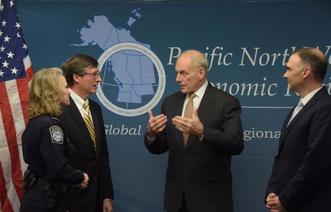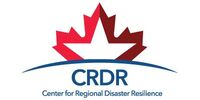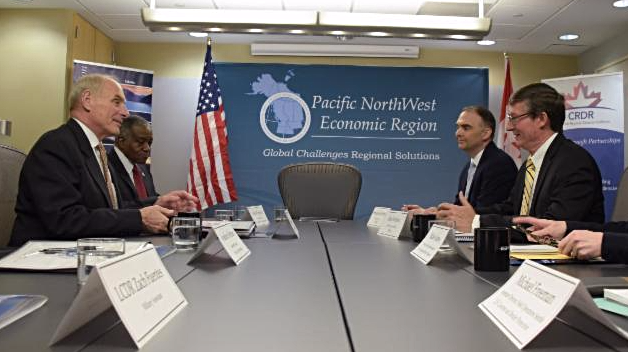News & Resources
Disaster Zone TV
Eric Holdeman, CRDR Director, from his personal website:
My passion is sharing information with people and organizations. One tool for passing information to others is the visual medium in the form of video. Here in the 21st Century that is not just limited to watching programming on your home TV set. With mobile devices you can watch programs wherever you are and have them on demand. With that concept in mind, I have worked to create Disaster Zone TV, which is a show about emergencies and disasters. The programming you will find below covers a broad cross section of topics. Please contact me if you want to suggest a topic that you think would be of interest to a broad cross section of people and organizations.
For the complete catalogue of Disaster Zone videos, click HERE.
My passion is sharing information with people and organizations. One tool for passing information to others is the visual medium in the form of video. Here in the 21st Century that is not just limited to watching programming on your home TV set. With mobile devices you can watch programs wherever you are and have them on demand. With that concept in mind, I have worked to create Disaster Zone TV, which is a show about emergencies and disasters. The programming you will find below covers a broad cross section of topics. Please contact me if you want to suggest a topic that you think would be of interest to a broad cross section of people and organizations.
For the complete catalogue of Disaster Zone videos, click HERE.
|
|
|
|
History of the CRDR
The CRDR has a long legacy of cooperation with states, municipalities, and other regions to develop disaster resilience. The first initiative to address regional infrastructure security issues was the creation of The Partnership for Regional Infrastructure Security in November 2001. The Partnership brought private critical infrastructure stakeholders across the states and provinces in the Pacific Northwest together with officials responsible for emergency management and public safety. These stakeholders, along with elected officials from each state and province in the PNWER region, identified opportunities for acting proactively to strengthen their infrastructures. This meeting led to the first Blue Cascades Exercise, which focused on infrastructure interdependencies and cascading failures from a hypothetical terrorist attack on the regional energy sector.
Since then, PNWER, with regional stakeholders, has organized six Blue Cascades critical infrastructure interdependencies Exercises:
These exercises have led to the development of a regional action plan to address the major gaps discovered. Many of the recommendations have been fulfilled and other recommended projects are currently underway.
Since then, PNWER, with regional stakeholders, has organized six Blue Cascades critical infrastructure interdependencies Exercises:
- Blue Cascades, a series of exercises focusing on infrastructure-related challenges associated with physical attacks and disruptions (2002)
- Cyber threats, disruptions, and impacts (2004)
- A major subduction zone earthquake (2005)
- Pandemic preparedness (2007)
- Supply chain resilience (2008)
- Public-health and safety impacts of major flooding (2010)
These exercises have led to the development of a regional action plan to address the major gaps discovered. Many of the recommendations have been fulfilled and other recommended projects are currently underway.
 PNWER's Matt Morrison, Brandon Hardenbrook, & CBP's Michele James speak with DHS Secretary John Kelly
PNWER's Matt Morrison, Brandon Hardenbrook, & CBP's Michele James speak with DHS Secretary John Kelly
Secretary of Homeland Security Visits PNWER
In March 2017, PNWER Executive Director Matt Morrison and Deputy Director Brandon Hardenbrook met with Secretary of Homeland Security John Kelly to discuss PNWER's work on disaster resilience planning and innovative U.S.-Canada border solutions.
Secretary Kelly praised the United State's friendship with Canada, noting that a streamlined secure border would be beneficial to both nations.
Morrison and Hardenbrook shared best practices for engaging stakeholders and improving the U.S.-Canada border. The meeting also included Michele James, Director of Field Operations for U.S. Customs and Border Protection. Over the years, PNWER has worked closely with CBP and regional stakeholders to improve border security while enhancing legitimate trade and travel. The PNWER Border working group played a significant role in facilitating stakeholder recommendations included in the joint U.S.-Canada Beyond the Border Action Plan. For the past two years, the working group has also been involved in preclearance efforts to better facilitate the movement of trade and people across the US-Canada border.
The March 31st dialogue with Secretary Kelly also highlighted the successes of PNWER, the Center for Regional Disaster Resilience, and their partners in helping the region to better understand the importance of the shared responsibility of resilience, preparedness, and mitigation and recovery planning. It is through the building of these trusted relationships that solutions to regional issues are found.
PNWER provided several recommendations to DHS on building resilience by engaging with the public and private sector, facilitating cooperation, and establishing trusted partnerships.
These recommendations include:
1. Focus on interdependencies and coordination at the regional level.
2. Incentivize greater public-private partnerships and regional collaboration.
3. Increase investment in mitigation and recovery planning.
PNWER also provided priority recommendations on improving the US-Canada border, which include:
1. Continue to seek stakeholder input on improving border security and utilize the region as a testbed for new technology to improve throughput.
2. Continue to expand the NEXUS program. Utilize the platform for new innovative programs such as the known employer pilot.
3. Work with transportation stakeholders in developing preclearance technical design standards and seek innovative solutions such as utilizing new technology and shared space with CBSA during the rollout of the preclearance program.
Book Review
All disasters have a political element to them. Thus, it is important to for elected officials to understand the politics of disasters. The book The Politics of Crisis Management: Public Leadership under Pressure is written specifically for elected officials. I highly recommend purchasing a copy for yourself and one for your elected official(s).
Buy the book here.
Another resource you can use is the four page summary of the book’s contents that was put together by Barb Graff, City of Seattle’s, Director, Office of Emergency Management. I still recommend reading the book in its entirety.
The Politics of Crisis Management: Public Leadership Under Pressure - Book Review
All disasters have a political element to them. Thus, it is important to for elected officials to understand the politics of disasters. The book The Politics of Crisis Management: Public Leadership under Pressure is written specifically for elected officials. I highly recommend purchasing a copy for yourself and one for your elected official(s).
Buy the book here.
Another resource you can use is the four page summary of the book’s contents that was put together by Barb Graff, City of Seattle’s, Director, Office of Emergency Management. I still recommend reading the book in its entirety.
The Politics of Crisis Management: Public Leadership Under Pressure - Book Review


